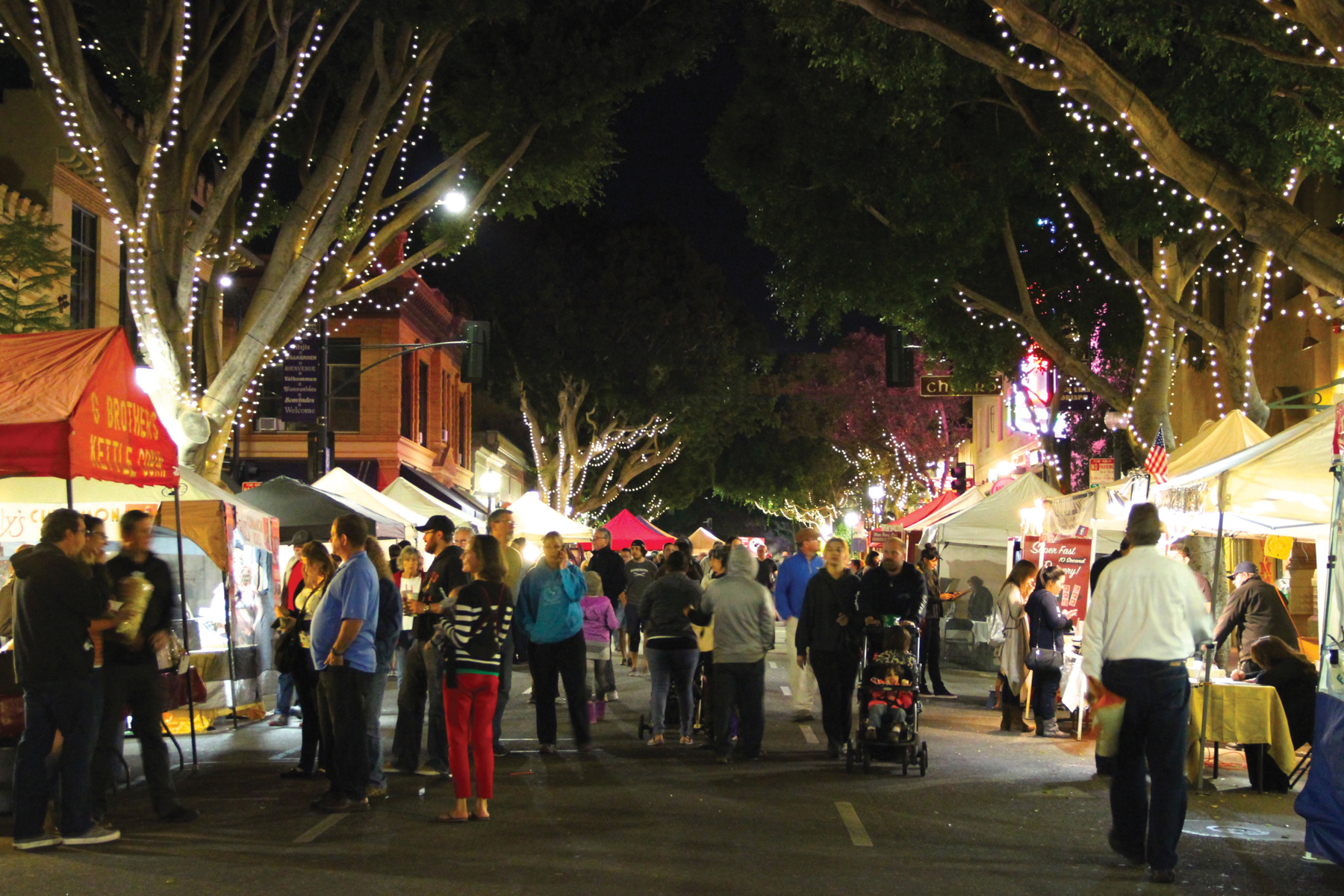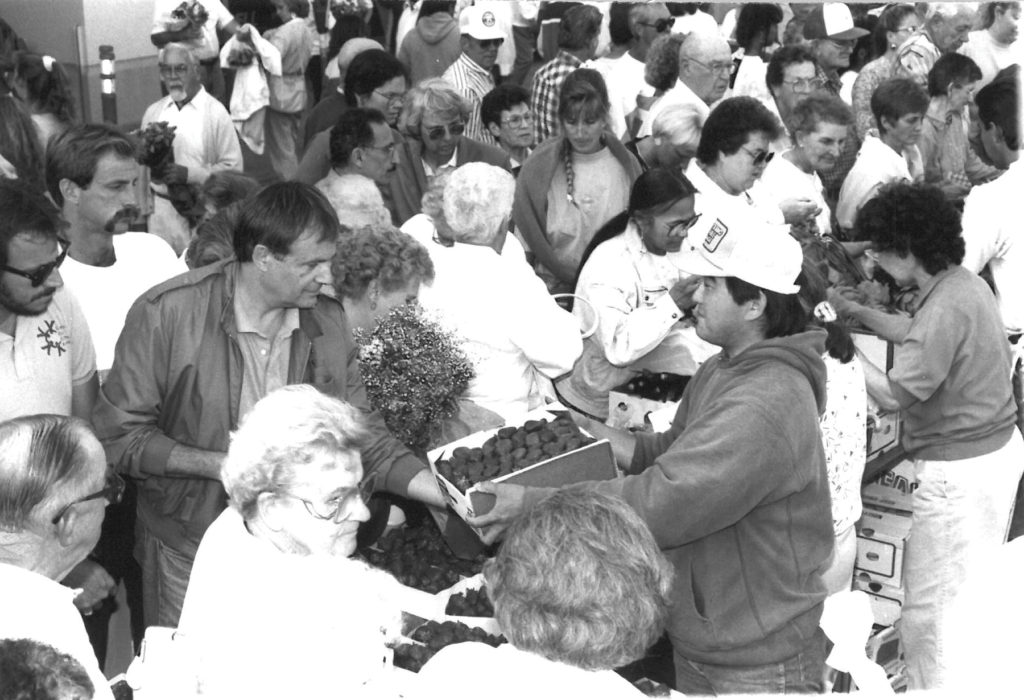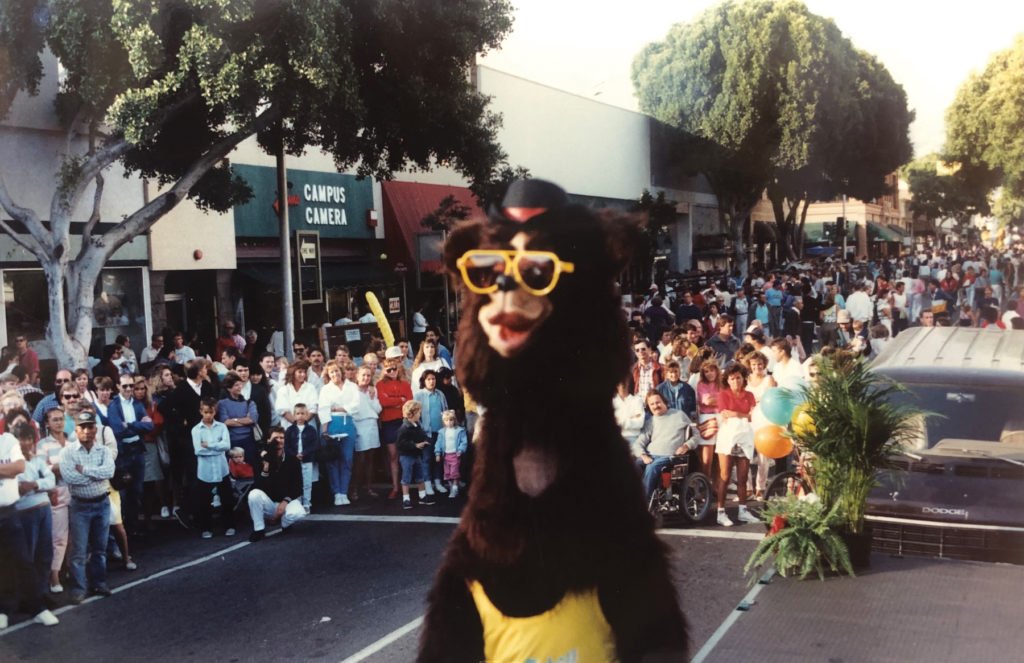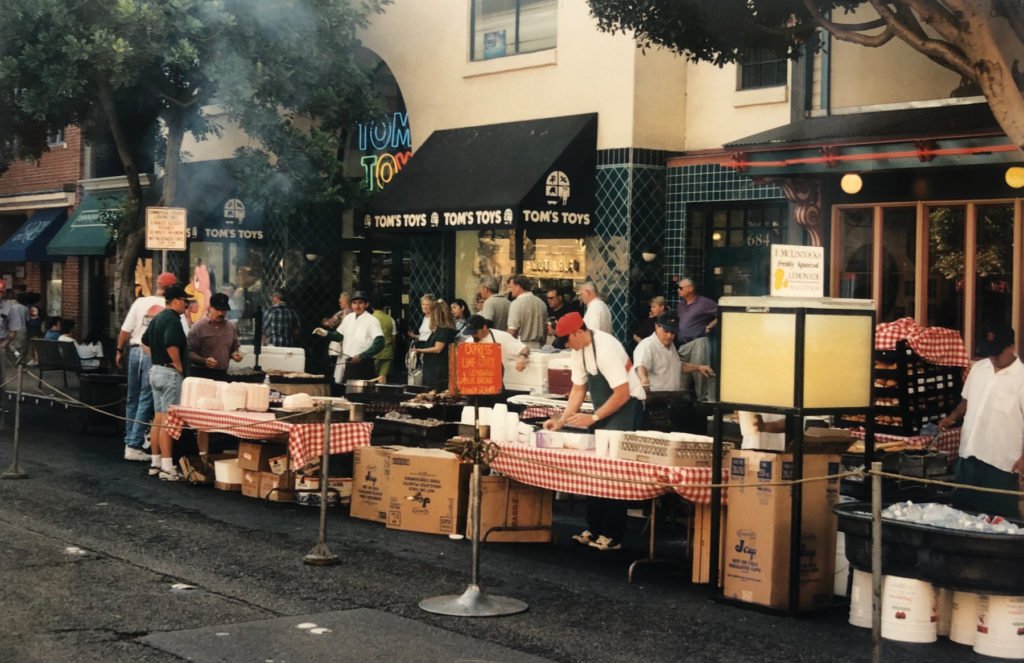
Historic San Luis Obispo Farmers’ Market Returns
On a warm Thursday night in the summer, a bustling crowd of locals and tourists alike swarms the Downtown San Luis Obispo Farmers’ Market, darting from booth to booth like honey bees in pollination mode, collecting steamed corn on sticks and ruby red strawberries. This scene on Higuera Street has repeated every week, year after year since 1978 — except for 2020, when the pandemic forever changed how we view tightly packed crowds of people inhaling not only samples of zesty craft hummus but also potentially, much more sinister COVID-19 germs. As we enter another summer season, typically the height of market attendance, a year without SLO’s famed street fair left us to reflect on its legacy of bounty, jubilation and community.
During the 1970s, small farms were increasingly shuttering due to the economic pressures brought on by powerful grocery chains and, as a result, consumers were losing access to a local selection of tree-ripened produce. With the passage of legislation that allowed farmers to sell directly to the public, farmers’ markets began sprouting up throughout California. San Luis Obispo welcomed its own exchange in 1978 in the parking lot of Youngs Giant Food on Broad Street, where a small gathering of men and women sporting leisure suits shopped a limited assortment of stone fruits from just a handful of vendors.

A group of local farmers later formed the San Luis Obispo County Farmers’ Market Association (FMA) in 1983 and relocated to Higuera Street, where stymied traffic allowed shoppers to wander the stalls freely. Still today, in between bites of sugar-speckled churros and chicken fried rice, patrons can take refuge from the rush between two walls packed in chewed gum — a beloved obscenity known as the Gum Wall.

Though the swish of bell-bottomed jeans has since been replaced by customers in Lululemon yoga pants and the number of vendor stalls has exploded to 120, a number of familiar faces return to the storied market each year. Downtown SLO Farmers’ Market Manager Whitney Chaney says Hayashi Vegetable Stand of Oceano and F. McLinktock’s are the most senior tenants, though she adds, “Our farmers have all, for the most part, been with us in some capacity for over 30 years.”

In the lead up to the unique, historic closure of the SLO Farmers’ Market in 2020, the sea of shoppers swelled to more than 6,000 people on a peak summer night. Whitney says a minimum of 2,000 people still showed up to secure sweet Blenheim apricots and plump purple eggplants even under a dreary, grey sky.

Amid its many advancements, including the addition of live entertainment, the market began inviting low-income residents in 2016 to use their Electronic Benefit Transfer (EBT) cards to purchase quality, locally grown produce for their families.
Through the uncertainty of 2020, about 20 smaller farmers’ markets continued throughout SLO County, even without the Higuera attraction, SLO County FMA Executive Director Peter Jankay says. He notes that’s because this great intersection of farm, ranch, sea and vine was born not of simple necessity for a food system, but rather a support system, one that continues to empower producers and feed families.

